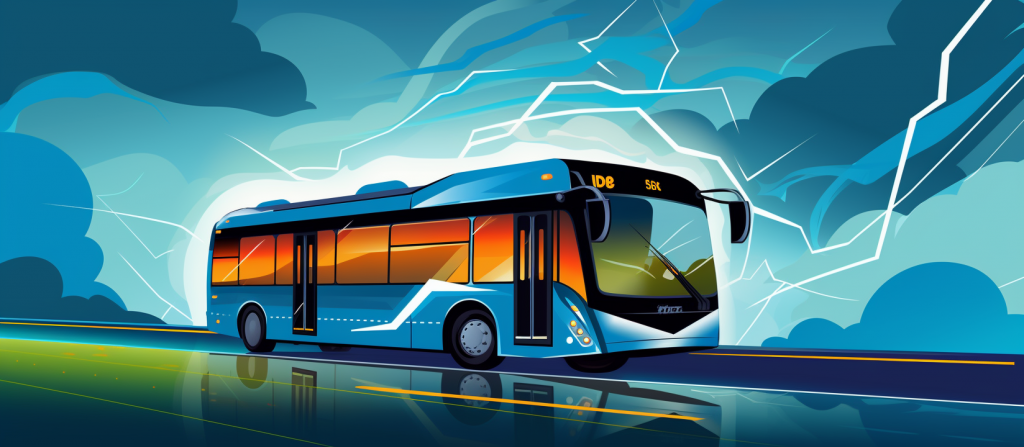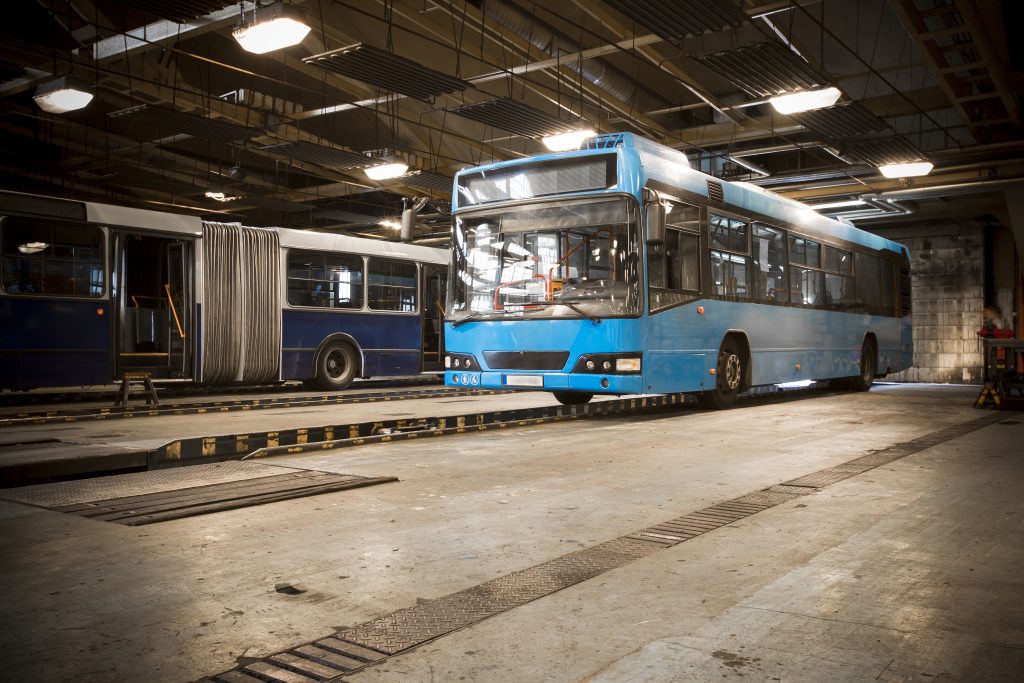Is Bus Electrification Economical or Environmental? Possibly Both.
I’ve been reading a lot more about fleet electrification, and it’s the exact same story as when I was doing research for my thesis/capstone in 2021: Everyone seems to want electric vehicles, but the bigger the vehicle, the bigger the challenge of electrical capacity to charge the thing, and the higher the cost of this newer-to-market technology. My favorite story from the capstone was of a transit agency that wanted to install several DCFC chargers for new electric buses, but the utility company refused to shoulder the multimillion dollar cost of upgrading the infrastructure, because the agency hadn’t actually taken possession of the buses yet, so the revenue stream wasn’t there. We’ll see more of this, but in the meantime, I wanted to try to make a side-by-side comparison of buses to see if electrification makes sense from an economic standpoint.

First: Air Quality.
One of the big arguments for upgrading from diesel buses is that diesel creates a lot of stinky particulate emissions. It’s possible to design and tune diesel engines to not be as stinky, but this is an art or science, one, that I’ve never figured out (and apparently, neither have most transit agencies or trucking operators). Skeptics of electric vehicles like myself or Dave Gifford point out that electric vehicles may not create tailpipe emissions, but they create more particulates from brake dust and tire dust, which can be various levels of toxic, even if it’s a different kind of toxic than diesel particulates.
This is because most electric vehicles are quite heavy. Buses, however, are already really heavy, so we’re moving from something like 30,000 lbs. to something like 40,000 lbs. A counterpoint to this is that most hybrids and electrics heavily rely on regenerative braking, which doesn’t use the brake pads, but rather, harvests kinetic energy from the wheels, avoiding the use of the brakes (and therefore particulates).
Lest someone read this and think, “geez, I guess we can’t win,” this is purely a product of electric vehicles being so heavy. But the Nissan Leaf, even in its newer iteration, weighs far less than vehicles like the Ford F-150 Lightning or the Mach-E. The old Leaf could still serve the average commuter since most car trips are very short (even though you get folks like my father, who insists he’ll never buy an EV because of range, while he drives more than 40 miles in a single trip perhaps a few times a year). The use of compressed natural gas (a.k.a. “compressed fossil gas”), which has been popular in a number of urban jurisdictions looking to reduce smog-forming ground-level ozone, substantially improves air quality, but doesn’t improve efficiency.
In conclusion, the air quality calculation is a complicated one, because particulates are going up in one way and down in another way. Research suggests that the overall improvements to air quality probably make electrification of diesel worth it. Now, we move on to efficiency!

Second: Efficiency.
We know that electric vehicles are frighteningly efficient, because they convert electrical power directly to mechanical energy, as opposed to creating a controlled explosion in an ICE engine, most of the energy of which is lost to tailpipe exhaust and radiated heat from the engine. A technical comparison is even more stark, showing us that even an electric Hummer is more efficient from a miles per gallon equivalent (mpge) standpoint than any of our buses, which range from 3.00mpgE for a diesel to 17.48mpgE for an electric.
This is not to say that an electric Hummer is good, because it’s really quite silly, and because we know that we can’t decarbonize the economy by selling more giant SUVs, no matter whether they’re powered by gasolina or by moonrocks. A final caveat that this table is made up of estimates– please don’t sue me if they’re not perfect, I have enough troubles as it is:
| Vehicle Type | mpg/mpgE | kWh/mi. |
| Compressed Natural Gas (CNG) | 3.00 | n/a |
| Diesel | 3.27 | n/a |
| Hybrid | 6.00 | n/a |
| Electric [1] | 17.48 | 2.15 |
| Passenger Car: Electric Hummer [2] | 49.88 | 1.48 |
| Passenger Car: Tesla Model 3 [3] | 140.55 | 0.239 |
Third: Ridership Economics.
The perennial complaint from transit detractors is that they once saw a bus that had no one on it, so it’s impossible for buses to be economical. It is incumbent upon city policymakers– even ones who seem to not particularly care about transit, like Detroit Mayor Mike Duggan- to work with business owners and residents alike to facilitate greater transit ridership. This is not in the name of a Top Secret UN Agenda 21 Conspiracy of George Soros, as my in-laws might believe, but rather one of economic productivity and energy efficiency. Just as we aren’t going to decarbonize transportation with luxury electric SUVs, we are going to need higher rates of bus ridership to decarbonize transportation with electric buses.
How much ridership?
Transit economics is a notoriously finicky subject because of the high capital costs associated with buying a giant vehicle, and because ridership varies a lot based on commuter patterns– and, generally, cities operate bus routes not because of profitability but to serve more people. (Not in Detroit, where we don’t value transit, but a lot of things are different here!). In general, buses, whether diesel or electric, would need to be pretty packed to hit that elusive 100% farebox recovery ratio. Of course, the point of buses is not to make money, but the point of transportation departments is also not to make money (hey MDOT, girl, looking at you!).
The diesel fuel costs for a bus fleet can be quite high. Eliminating most of the thermodynamic losses from the actual electro-motive processes involved, the electric bus translates to 5.82x higher efficiency than the diesel. This is outweighed a bit by the inevitable increase in tire wear, but electric buses also have lower maintenance costs. We’ve got a decent enough data set because even though electric buses are relatively new, an electric bus, like a diesel bus, is running pretty much constantly.
The higher capital cost and the high cost of charging infrastructure to support electric buses are certainly a consideration, but capital expenditures don’t usually factor into the question of operating solvency anyway, and if you amortize those costs out over the entire lifespan of the vehicle, the increase is really quite negligible, given that operating a city bus 24 hours a day already costs the better part of a million dollars per year, if we’re going with a low-end estimate of $100/hr. for 24 hours, 365 days each year. Over ten years at $8.76 million in operating costs, a $300-500,000 upcharge for the unit cost plus a comparable cost for infrastructure development (for charging) works out to less than a 10% upcharge.
On top of that, the high costs of diesel fuel translate to a few hundred dollars a day, compared to $100 or less (possibly more like $50, depending on the size of the battery) for an electric bus to travel roughly the same distance. And that adds up.

Conclusions: Charge Ahead?
Buses are large things, and it’s possible that we’ll have a discussion at some point about simply building smaller vehicles. Would this increase route frequencies? Maybe, if the per-unit costs were lower, and if the maintenance costs were accordingly lower. There are plenty of places in the world that embrace much tinier transportation methods. I recall seeing a lot of van and minivan-sized transport services in Tijuana, for example, and there are oodles of examples of single-passenger or small double-passenger transport modes used in densely-populated cities of southeast and southern Asia.
Adoption is going to be fundamentally limited in the near-term by challenges to virtually every municipal transit agency in the country these days. Departments of transportation are going big on highway expansion, ranging from TxDOT’s $85 billion capital plan to MDOT being a bunch of bozos. It is up to us to ask questions like the ones I’ve laid out here– trade-offs between particulate possibilities and known exhaust quantities, or infrastructure development challenges around charging, plus the stark comparisons in operating costs- in figuring out how to push for both better transit systems in general, but also ones that are greener and more sustainable from an operating standpoint.



